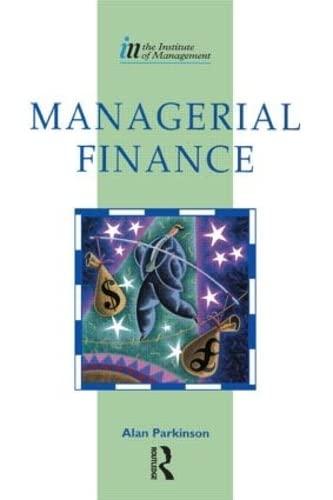Question
Suppose that you are asked to conduct a simple cost-benefit analysis of the following environmental policy: Year 0 Year 1 Year 2 Year 3 Costs
Suppose that you are asked to conduct a simple cost-benefit analysis of the following environmental policy:
| Year 0 | Year 1 | Year 2 | Year 3 | |
| Costs | $2 mln | $1.5 mln | $1 mln | $0.5 mln |
| Benefits | $1.5 mln | $1 mln | $0.5 mln | $0mln |
1) What is the net present value of the policy if the discount rate is 2% annually? Estimate using the usual formula (long-format formula, calculating the PV(TNB) of the policy in each time period). And estimate the net present value of the policy using the capitalization formula (NPV = TNB/r), where r = 2% annually. Explain whether and why the NPV values estimated using the two different formulas are similar or different.
2) Think of an example of an environmental policy that might have such a peculiar distribution of costs and benefits over time.
3) Assume that there is significant uncertainty involved in possible outcomes of this policy. The two alternative scenarios include Scenario A: full-compliance on the polluting industrys end, and Scenario B: partial compliance on the polluting industrys end (i.e., not all the firms in the polluting industry follow the policy prescription). The probabilities of these alternative scenarios are estimated to be 70% for Scenario A [with the resulting NPV that you have calculated in part a], and 30 percent for Scenario B, with the resulting NPV of $0.5mln. What is the expected net present value of this policy in this case?
Step by Step Solution
There are 3 Steps involved in it
Step: 1

Get Instant Access to Expert-Tailored Solutions
See step-by-step solutions with expert insights and AI powered tools for academic success
Step: 2

Step: 3

Ace Your Homework with AI
Get the answers you need in no time with our AI-driven, step-by-step assistance
Get Started


